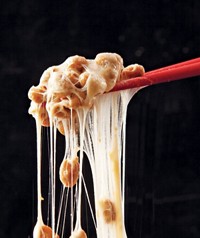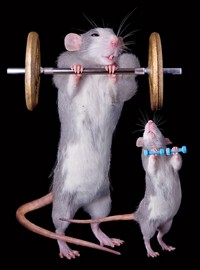Advertisement
Grab your lab coat. Let's get started
Welcome!
Welcome!
Create an account below to get 6 C&EN articles per month, receive newsletters and more - all free.
It seems this is your first time logging in online. Please enter the following information to continue.
As an ACS member you automatically get access to this site. All we need is few more details to create your reading experience.
Not you? Sign in with a different account.
Not you? Sign in with a different account.
ERROR 1
ERROR 1
ERROR 2
ERROR 2
ERROR 2
ERROR 2
ERROR 2
Password and Confirm password must match.
If you have an ACS member number, please enter it here so we can link this account to your membership. (optional)
ERROR 2
ACS values your privacy. By submitting your information, you are gaining access to C&EN and subscribing to our weekly newsletter. We use the information you provide to make your reading experience better, and we will never sell your data to third party members.
Biological Chemistry
Newscripts
Recycling App, The Buzz On Beer, Of Mice And Men
by Marc S. Reisch
December 12, 2011
| A version of this story appeared in
Volume 89, Issue 50

With Thanksgiving behind us and other holidays yet to come, many of us will end up dealing with a lot of leftovers by the new year. No, not just the food, but all the cans and bottles left behind after the feasting and drinking.
It’s a virtuous task sorting through all those containers so they can be recycled, but it is also sheer drudgery. What if we could convince ourselves that recycling is really fun? The folks at the American Chemistry Council (ACC) have turned recycling into a free game that you can download and put on your phone.
Yes, there’s an app for that. It’s called Bin It! and is available for the iPhone and iPad. The game is simple yet engaging. Bin It! players toss plastic bottles into various recycling bins while dealing with distractions from animals, flashing cameras, and tricky breezes. Sounds like a typical day in the Newscripts gang’s kitchen.
But what is the incentive to play such a game? The game converts players’ successful tosses into the number of T-shirts, sweaters, and sleeping bags that could be made from recycled plastics. Alas, all the prizes are virtual.
Steve Russell, vice president of ACC’s plastics division, says, “We hope people play Bin It! and then remember to ‘bin it’ at home, on the road, at the office, at ball games … everywhere.” Wishful thinking, perhaps, but Russell’s heart is in the right place.
Since it was released in mid-November, the app has received a rating of four out of five stars from a total of five reviewers. ACC says it might develop Bin It! for Android and BlackBerry phones, so all smartphone users can experience the joy of recycling.
There are sure to be a few beer bottles tossed into recycling bins during the holidays. And we’ve probably all asked ourselves, once the bottles end up there, why do fruit flies seem to congregate around them?
Well, wonder no more. Anupama Dahanukar, an assistant professor of entomology at the University of California, Riverside, and colleagues found that a protein receptor dubbed Gr64e, associated with sensory neurons in flies’ mouths, draws the flies to beer like bees to honey. The researchers recently published their results in Nature Neuroscience (DOI: 10.1038/nn.2944).
What those flies are after is not so much a good buzz as some good nutrition. And in the case of beer and other fermentation products, Gr64e helps the insects detect glycerol, a sweet-tasting and nutritious compound that yeasts make during fermentation. The researchers did not say whether humans had similar receptors.
Fruit flies might know what’s good for them, but sometimes humans don’t. Researchers at the Norwegian Institute of Public Health have developed transgenic mice to better discover whether heat-processed food might cause colorectal cancer (Mol. Carcinogen., DOI: 10.1002/mc.20869).

In proportion to their size, the transgenic mice produce the same amount of sulfotransferase enzymes in their intestines as humans do. Unlike human guts, mice guts don’t normally make these enzymes, which are important for digestion and hormone regulation. When the transgenic mice were fed or injected with 2-amino-1-methyl-6-phenylimidazo[4,5-b]pyridine, a by-product of heat-treated foods, they developed 30−80% more colorectal tumors than run-of-the-mill mice.
So the transgenic mouse models seem to suggest that men and mice alike should steer clear of well-done food. The study didn’t address the risk of uncooked or undercooked foods.





Join the conversation
Contact the reporter
Submit a Letter to the Editor for publication
Engage with us on Twitter